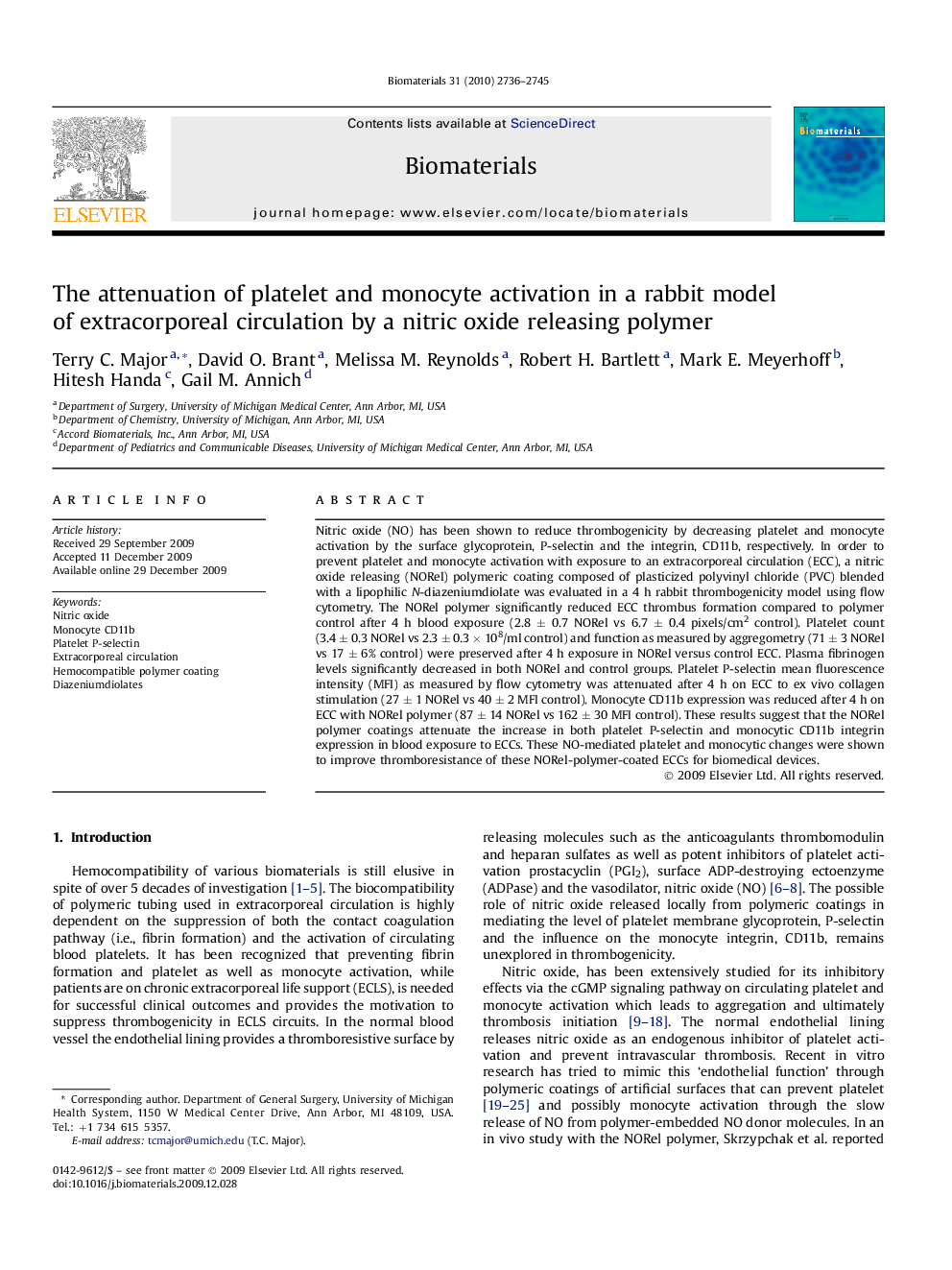| Article ID | Journal | Published Year | Pages | File Type |
|---|---|---|---|---|
| 8560 | Biomaterials | 2010 | 10 Pages |
Nitric oxide (NO) has been shown to reduce thrombogenicity by decreasing platelet and monocyte activation by the surface glycoprotein, P-selectin and the integrin, CD11b, respectively. In order to prevent platelet and monocyte activation with exposure to an extracorporeal circulation (ECC), a nitric oxide releasing (NORel) polymeric coating composed of plasticized polyvinyl chloride (PVC) blended with a lipophilic N-diazeniumdiolate was evaluated in a 4 h rabbit thrombogenicity model using flow cytometry. The NORel polymer significantly reduced ECC thrombus formation compared to polymer control after 4 h blood exposure (2.8 ± 0.7 NORel vs 6.7 ± 0.4 pixels/cm2 control). Platelet count (3.4 ± 0.3 NORel vs 2.3 ± 0.3 × 108/ml control) and function as measured by aggregometry (71 ± 3 NORel vs 17 ± 6% control) were preserved after 4 h exposure in NORel versus control ECC. Plasma fibrinogen levels significantly decreased in both NORel and control groups. Platelet P-selectin mean fluorescence intensity (MFI) as measured by flow cytometry was attenuated after 4 h on ECC to ex vivo collagen stimulation (27 ± 1 NORel vs 40 ± 2 MFI control). Monocyte CD11b expression was reduced after 4 h on ECC with NORel polymer (87 ± 14 NORel vs 162 ± 30 MFI control). These results suggest that the NORel polymer coatings attenuate the increase in both platelet P-selectin and monocytic CD11b integrin expression in blood exposure to ECCs. These NO-mediated platelet and monocytic changes were shown to improve thromboresistance of these NORel-polymer-coated ECCs for biomedical devices.
